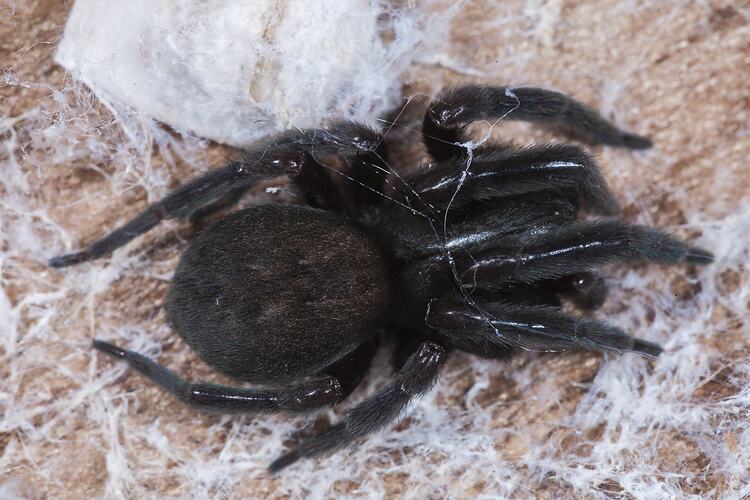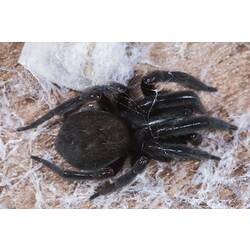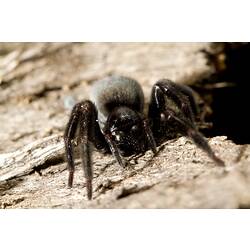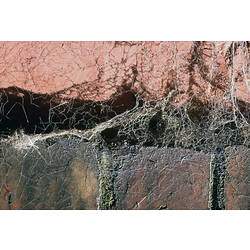General Description
Cephalothorax (the fused head and thorax) black, rectangular at the front. Abdomen round and velvety black or dark grey. Body up to 2 cm long. Webs are lacy with funnels.
Biology
Black House Spiders are one of the more common species of spiders to be found in our homes and gardens. They like to make their lacy webs in the corners of window frames, or in brickwork, fences, tree bark and the like. The spiders make a funnel in their webs and wait at the back of this tunnel, where they cannot be seen by predators, for something to land in their web. When this happens, the spiders will rush out and bite the prey. The lucky Black House Spiders are those who make their webs near porch or outside lights on our homes. Insects which are attracted to the lights at night will often blunder into the webs, providing the spiders with a constant food source. These spiders do a very good job in keeping down insect numbers, provide a food source for birds and are one of the preferred food sources for White-tailed Spiders. They live for around two years. These spiders can be quite intimidating as they are often very dark in colour and will rush out of the funnel of their web to seize their prey. Despite this, Black House Spiders are quite timid. Female spiders do not voluntarily leave their webs, but at certain times of the year the male Black House Spiders will go wandering looking for a female. The funnel shaped nature of the web leads some people to mistake them for funnel-web spiders, however funnel-web burrows are not built in window frames or fences and these spiders are not found in metropolitan Melbourne.
Distribution
Mainland Australia and Tasmania.
Habitat
Often around the bricks in buildings, near windows and doors, also under roof eaves.
More Information
-
Animal Type
-
Animal SubType
-
Brief Id
A spider with a velvety black abdomen and cephalothorax with a rectangular front.
-
Colours
Black
-
Habitats
Wetland, Urban, DryForest, WetForest, Woodland, Mallee, Grassland
-
Where To Look
-
Diet
Insects
-
Hazards
Bites are rare due to the spider's timid nature, but can be painful and cause swelling and a general reaction (may include headache, nausea, vomiting and muscular pain, sweating and giddiness).
-
Endemicity
-
Conservation Statuses
CITES: Not listed, FFG Threatened List: Not listed, EPBC Act 1999: Not listed, IUCN Red List: Not listed
-
Web
Web
-
Taxon Name
-
Scientific Author
(Koch, 1872)
-
Common Name
Black House Spider
-
Kingdom
-
Phylum
-
Subphylum
-
Class
-
Order
-
Infraorder
-
Family
-
Genus
-
Species Name
insignis







